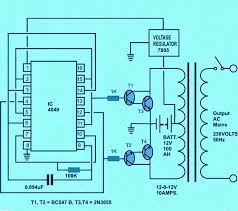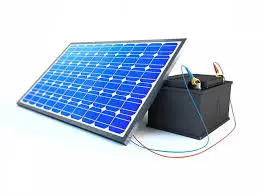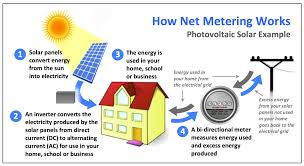As the trend of energy consumption is changing, so is the source of energy. Due to energy crises and cost factor, people are getting more and more fascinated by the cheaper and environment-friendly alternatives of the same. As we have been reading, we know that solar energy is one of the best in this category. More and more enthusiasts are getting involved in the solar market. The government is also providing a lot of resources as well as awareness about the same. But when it comes to installing one at your place, people feel reluctant towards the same. It may be due to the presence of a lot of factors affecting the design. It is not that difficult, and it is tricky, though. We will discuss various criteria for designing a solar power plant at your home.

First of all, let us see what will be the basic components that you will require while installing a plant yourself.
Components Required
- Photovoltaic panels

- Solar charge controller

- Inverter

- Battery

- Backup source
- Energy meter

Designing Steps
- Know your requirement (Load)
- Select the best-suited PV panel (sizing)
- Preparing the layout of the system
- Inverter to be used
- Battery to be used
Designing in Detail
1. Know Your Requirement
The solar power plant that you design will be the most efficient one only if it is in conformation with your requirement. You can calculate your requirement in two ways:
- Either you can check and analyze your 3 to 4 previous month’s electricity bills and consider the largest of them as your requirement. It is suggested to estimate your requirement a bit larger than the largest of the above estimation.
- Or you can analyze your load. This can be done by calculating the total number of electrical equipment working in your house, along with their power ratings and number of an hour each work in a day.
2. Selection of PV Panel
The most basic yet the most crucial consideration in designing a solar power plant is the selection of the PV panel to be used. Due to the availability of various types and capacities of solar panels, it becomes even more confusing to choose one. But if you become well aware of your load, then it is easy to select the panel.
The panel can either be a monocrystalline, polycrystalline, or thin film. But Polycrystalline is more commonly used due to is fair efficiency and fairer cost fact. From your load, you can decide the number of solar panels you will require. E.g., if your requirement is 2 kW, and your panel is of 250 W capacity, then you will need eight panels.
Along with the number, the size of the panel is also an important factor. The available area for installation must be known. The standard size of a panel is 65 inches by 39 inches for residual installation.
3. Preparing a Layout of your Design
The layout is the actual design of your solar plant. A layout has considerations of both: the capacity of solar panels and their size as well. A layout deals with the area available as well. The panels, according to the requirements, can be arranged in:
- Series: Here, panels will be connected in series, the voltage generated by each of them. But current through each remains the same.
- Parallel: Here, the panels are connected in parallel; the currents add up, keeping the voltage the same.
- Mixed: A layout may consist of a combination of series and parallel connected panels. But then, certain things have to be kept in mind.
4. Selecting an Inverter
The primary function of an inverter is to convert the DC output of the solar panel into AC for making it suitable for equipment. Various types of solar inverters are:
- Microinverters: These are simple in design and installation. It is a plug and play device. They electrically isolate the panels from each other so that shading and other factors do not affect the output. But its cost per peak Watt is high.
- Off-grid inverters: These have bidirectional conversion capacity, i.e., DC to AC and vice versa. Hence it can maintain the PV voltage as well as the battery voltage.
- String inverters: These are reliable, easily accessible, and highly efficient.
- Central inverters: These are typically ground-mounted.
5. Battery
Batteries are used for constant power supply and storage of energy. The batteries must have a large lifetime, reliability, and of course, efficiency. Care must be taken while selecting a battery because a battery of higher power than required would increase the overall cost of the system.
Miscellaneous Criteria
- Shadow analysis: The rooftop must be examined before installation about the shadow throughout the day. Else, the rated power may not be obtained.
- Geographical location: Solar output depends highly on the site in which it is installed. The peak sun hours of various places vary according to location, and so the output.
For further details about designing, visit https://www.youtube.com/watch?v=1XOSfS5Vu3A


